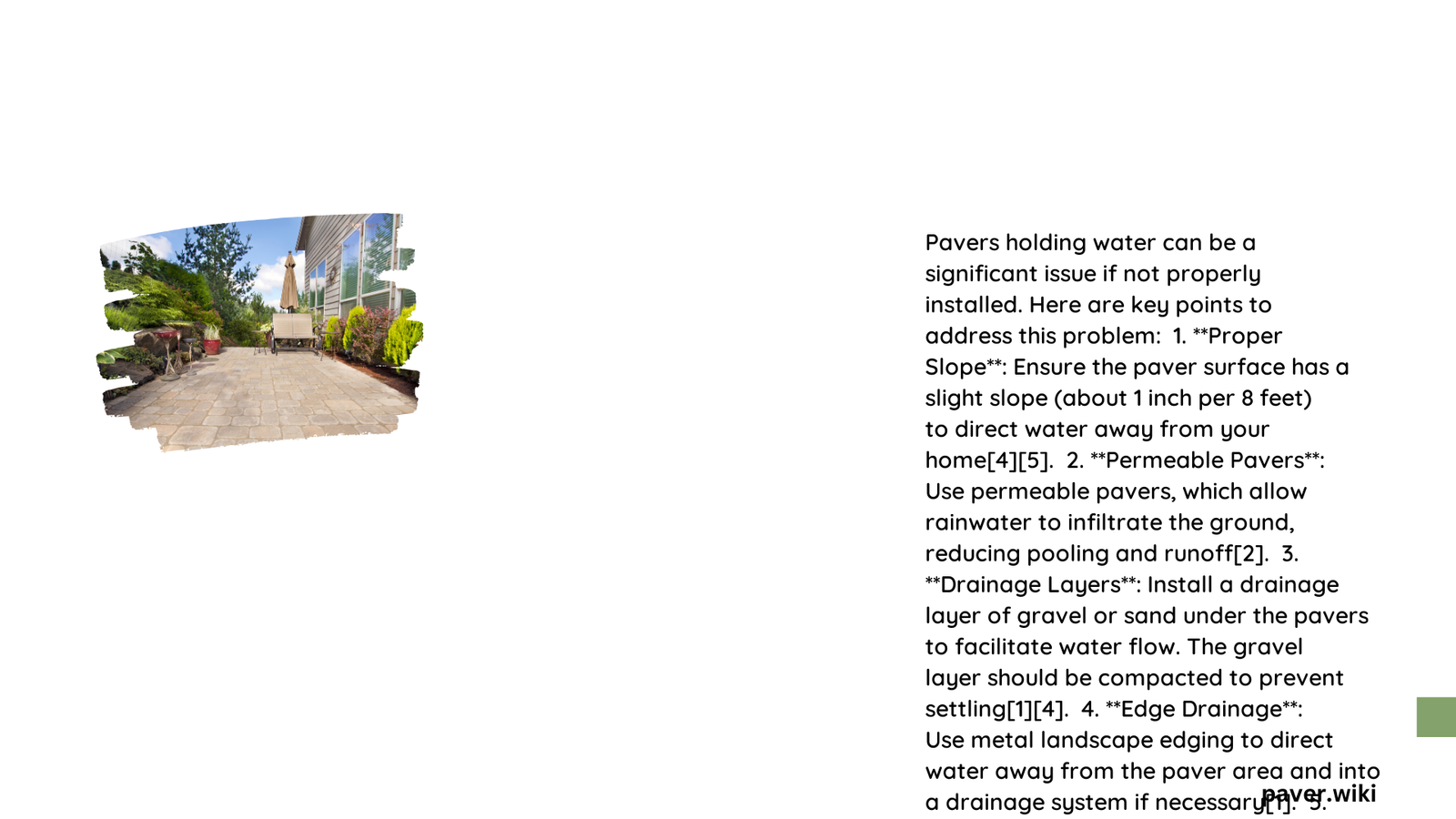Pavers holding water represent an innovative approach to managing surface runoff and reducing environmental impact. These specialized paving systems capture, filter, and redirect rainwater through strategic design and material composition, offering sustainable solutions for residential, commercial, and municipal landscapes. By integrating advanced drainage technologies, these pavers minimize flooding risks, replenish groundwater, and provide eco-friendly alternatives to traditional impermeable surfaces.
What Are Pavers Designed to Hold Water?
Pavers holding water are specialized surface materials engineered to manage and redirect rainfall through strategic design. Unlike traditional concrete or asphalt surfaces, these innovative systems allow water to infiltrate, filter, and be absorbed into the ground, reducing surface runoff and supporting environmental sustainability.
Types of Water-Retentive Pavers
| Paver Type | Water Retention Capacity | Primary Material | Typical Application |
|---|---|---|---|
| Permeable Concrete | High | Cement, Aggregate | Driveways, Parking Lots |
| Plastic Grid | Moderate | Recycled Polyethylene | Grass Parking, Landscaping |
| Porous Asphalt | Moderate-High | Bituminous Asphalt | Roads, Low-Traffic Areas |
How Do Permeable Pavers Capture Water?

Permeable pavers capture water through multiple strategic layers:
- Surface Layer: Designed with open joints or porous materials
- Bedding Course: Allows initial water infiltration
- Base Reservoir: Stores and gradually releases water into surrounding soil
- Underlying Soil: Final absorption and filtration point
Water Retention Mechanisms
- Infiltration Channels: Engineered spaces between pavers
- Aggregate Layers: Multiple stone layers with varying sizes
- Geotextile Membranes: Prevent soil migration while allowing water passage
What Factors Influence Water Retention?
Several critical factors determine a paver system’s water-holding capabilities:
- Soil Permeability: Determines water absorption rate
- Slope of Installation: Affects water flow and retention
- Aggregate Layer Composition: Influences storage capacity
- Climate and Rainfall Patterns: Determines system design requirements
What Are Installation Best Practices?
Successful water-retentive paver installation requires:
- Comprehensive site assessment
- Proper grading (1-2% slope recommended)
- High-quality, well-draining aggregate materials
- Professional engineering and design
- Regular maintenance and inspection
Cost and Performance Considerations
Average Installation Costs:
– Permeable Concrete Pavers: $10-$30 per square foot
– Plastic Grid Systems: $5-$15 per square foot
Performance Metrics:
– Water Infiltration: 5-15 gallons per minute per square foot
– Runoff Reduction: Up to 90% compared to traditional surfaces
Maintenance Requirements
- Annual professional inspection
- Clear debris from surface and joints
- Replace damaged or clogged sections
- Monitor water flow and drainage efficiency
Environmental Benefits
- Groundwater recharge
- Reduced urban heat island effect
- Improved water quality
- Decreased stormwater management infrastructure costs
Potential Limitations
- Higher initial installation costs
- Requires periodic maintenance
- Performance varies with local geological conditions
- Not suitable for all terrain types
Professional Recommendations
- Consult local landscape engineers
- Conduct comprehensive site analysis
- Design system specific to local climate
- Consider long-term environmental impact
References:
– HydroLogic Permeable Concrete Pavers
– Keystone Hardscapes Technical Guide
– TRUEGRID Pavers Guide
